The TV That Time Forgot: My Friend Flicka
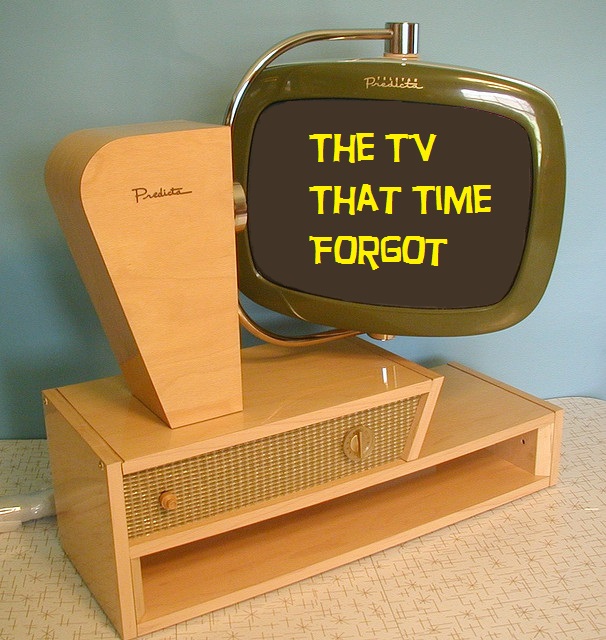 Back at the dawn of the TV era, most shows, and especially shows aimed at children, were Westerns. Heck, even Howdy Doody was supposedly about performers in a Wild West Show (Buffalo Bob, Chief Thunderthud, Princess Summerfallwinterspring, and Howdy himself decked out in a neckerchief, blue jeans, and cowboy boots).
Back at the dawn of the TV era, most shows, and especially shows aimed at children, were Westerns. Heck, even Howdy Doody was supposedly about performers in a Wild West Show (Buffalo Bob, Chief Thunderthud, Princess Summerfallwinterspring, and Howdy himself decked out in a neckerchief, blue jeans, and cowboy boots).
One of the earliest and most successful of these types of shows was My Friend Flicka, originally broadcast on CBS in 1956 in what was quaintly known then as the “family hour” (7:30 pm Eastern and 6:30 Central). As you can guess from the title, the show wasn’t based on the exploits of any gun-totin’ marshal or masked vigilante (and why did they call him the “Lone” Ranger when he was always hanging around with Tonto?). Nope, the hero of this TV show was a horse. Or should we say heroine as “flicka” is Swedish for “girl” and friend Flicka was indeed a girl horse.
Flicka started out as a 1941 novel, written by Mary O’Hara. In 1943, it was adapted into a couple of movies, starring Roddy McDowell. When television came along, My Friend Flicka was ready.
 Flicka lived on the Goose Bar Ranch in Wyoming at the turn of the last century (around 1900) and was best pals with the ranchers’ son, Ken McLaughlin. Why a Scottish rancher was giving his animals Swedish names was never addressed. Ken’s dad, Rob McLaughlin, was one of those earnest, struggling ranchers so popular in TV shows of the time. (Prosperous ranchers were almost always crooked, unless they were named Ben Cartwright.) Rob’s wife, Nell, was one of them thar plainspoken wives living a simple prairie life, yet still finding time (and the money) for full make-up and an always-perfect hairstyle. Most episodes revolved around homespun problems like wells drying up, stray dogs that needed adoption, or young neighbor kids with a fear of animals. The problems had to be simple because the McLaughlins usually waited for Flicka to solve them. (Hmm, lack of brain power may have been the reason the Goose Bar Ranch was always struggling.) The ranch also employed one grizzled coot, named Gus, as a helper. Gus had a Swedish accent that came and went depending on the scene. Maybe he’s the one who named Flicka.
Flicka lived on the Goose Bar Ranch in Wyoming at the turn of the last century (around 1900) and was best pals with the ranchers’ son, Ken McLaughlin. Why a Scottish rancher was giving his animals Swedish names was never addressed. Ken’s dad, Rob McLaughlin, was one of those earnest, struggling ranchers so popular in TV shows of the time. (Prosperous ranchers were almost always crooked, unless they were named Ben Cartwright.) Rob’s wife, Nell, was one of them thar plainspoken wives living a simple prairie life, yet still finding time (and the money) for full make-up and an always-perfect hairstyle. Most episodes revolved around homespun problems like wells drying up, stray dogs that needed adoption, or young neighbor kids with a fear of animals. The problems had to be simple because the McLaughlins usually waited for Flicka to solve them. (Hmm, lack of brain power may have been the reason the Goose Bar Ranch was always struggling.) The ranch also employed one grizzled coot, named Gus, as a helper. Gus had a Swedish accent that came and went depending on the scene. Maybe he’s the one who named Flicka.
 Anyway, the cast featured Johnny Westbrook as Ken, Gene Evans as Rob, Anita Louise as Nell, and veteran character actor Frank Ferguson as Gus. It was one of the first television series produced by Twentieth Century Fox. Fox actually put more money into the series than was average. For starters, they filmed the show in color (which helped keep it in syndication well into the 1960s), shot extensively in outdoor locations rather than sound stages, and used higher production values than most of the other shows being produced in 1956.
Anyway, the cast featured Johnny Westbrook as Ken, Gene Evans as Rob, Anita Louise as Nell, and veteran character actor Frank Ferguson as Gus. It was one of the first television series produced by Twentieth Century Fox. Fox actually put more money into the series than was average. For starters, they filmed the show in color (which helped keep it in syndication well into the 1960s), shot extensively in outdoor locations rather than sound stages, and used higher production values than most of the other shows being produced in 1956.

The cost of each episode is one reason why My Friend Flicka stayed in production for just one season, producing 39 episodes. But the high quality of the production kept the show running on all three major networks for a decade. From 1956 to 1957, it ran in black and white on CBS. Then, it transferred to NBC with the 39 episodes running in color on that network from 1957 to 1958. From 1959 to 1960, ABC ran My Friend Flicka as an afternoon show. Flicka galloped back to CBS during the 1961-62 season, returning to ABC in the fall of 1962 through December of 1963. It ended its network run at CBS from September of 1964 through September 1966. A very impressive run for just 39 episodes.
 It's always puzzled us that this show and one of the other long-running shows starring a horse, Fury, featured a young boy as the horse’s sidekick when the kids most into horses rather than the cowpokes who rode them tended to be girls. Only National Velvet in the 60’s seemed to understand that.
It's always puzzled us that this show and one of the other long-running shows starring a horse, Fury, featured a young boy as the horse’s sidekick when the kids most into horses rather than the cowpokes who rode them tended to be girls. Only National Velvet in the 60’s seemed to understand that.
Regardless, My Friend Flicka enjoyed a successful run in syndication after its network outings before finally being put out to pasture. All 39 episodes are available on home video, and there is an entire website dedicated to the show at MyFriendFlicka.com.
Save on Your Vacation Stay
 Summer vacation time is here. We have some timely tips that can save you money if you plan on staying at a hotel during any upcoming trip.
Summer vacation time is here. We have some timely tips that can save you money if you plan on staying at a hotel during any upcoming trip.
- Book with the hotel directly – Most hotels have to pay a percentage of the room fee if the room is booked through a third party. Most will offer you the best rate if you book directly from their website. However, you should still check around. If you can find a lower rate from a third party, contact the hotel directly and ask if they’ll match it. Odds are, they will.
- Wait – Believe it or not, arranging for your accommodations can get you cheaper room rates if you book closer to the date you actually want the room. That’s because an empty room on any given night is revenue the hotel can never recover. Studies show that if you wait, you can cut as much as 20% off your bill
- Join the hotel’s loyalty program – Most loyalty programs are offered at no charge. Even if you never plan on visiting any of that company’s hotels in the future, many loyalty programs will offer instant perks like free wi-fi or beverage credits.
- Large parties and long stays should look into Airbnb – If you’re traveling with a party that’s larger than can fit in a single hotel room or you’re planning an extended stay, renting a house through Airbnb can reduce your costs by as much as 33%.
Wherever you decide to stay on your summer trip, we wish you safe travels and happy memories!
The Top Doctors Say...
According to the nation’s top doctors, these are the things to avoid if you want to live longer:

EATING HABITS
- Eating several meals at a fast food restaurant every week
- Eating two or fewer servings of vegetables each day
- Binging on “social foods” like hot wings, pizza, nachos, potato skins, etc., a few times per week
- Consuming ice cream, donuts, cake, or other sweets daily

LIFESTYLE HABITS
- Smoking cigarettes
- Not exercising
- Feeling lonely or socially isolated
- Feeling stressed more often than feeling happy
- Taking painkillers daily
Obviously, if you’re on painkillers, consult your doctor before doing anything!
The Essential Boomer Album Collection - The Velvet Underground & Nico
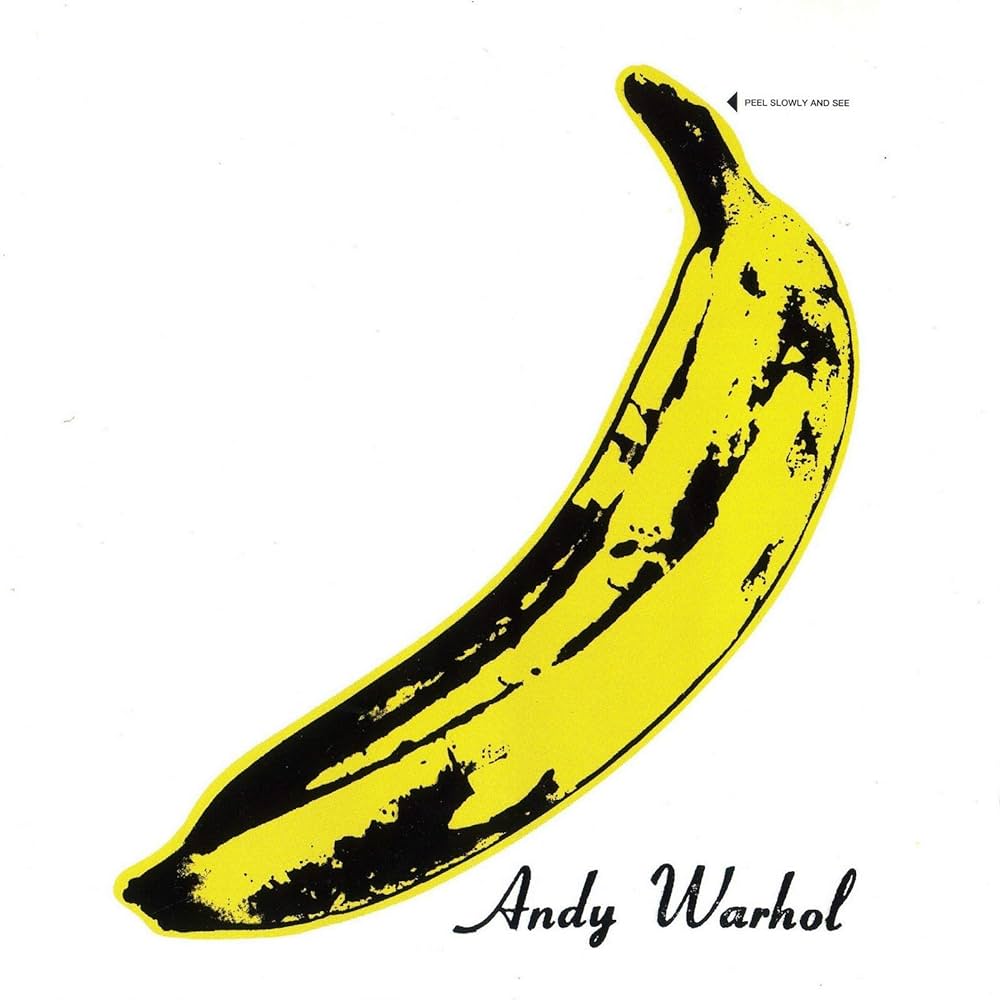 Of all the albums we’ve designated as “essential,” the Velvet Underground’s first album, known officially as The Velvet Underground & Nico, is the only one that was a commercial failure when it was first released.
Of all the albums we’ve designated as “essential,” the Velvet Underground’s first album, known officially as The Velvet Underground & Nico, is the only one that was a commercial failure when it was first released.
The album introduced the world to a guy who would go on to become a major influence on the music scene in the 1970s, Lou Reed. Reed wrote all of the songs on the LP, 9 by himself and 2 in collaboration with other band members, including John Cale, Sterling Morrison, and female drummer Mo Tucker.
The sound was both minimalistic and experimental. Cale played a viola on several tracks (not a staple of most rock bands). Instruments were deliberately detuned to create an eerie and sometimes unsettling sound. Reed’s lyrics dealt with topics that were a far cry from the Beatles’ love songs and the Rolling Stones’ faux bad boy posturing. The topics included heroin addiction, sadomasochism, prostitution, and sexual deviancy.
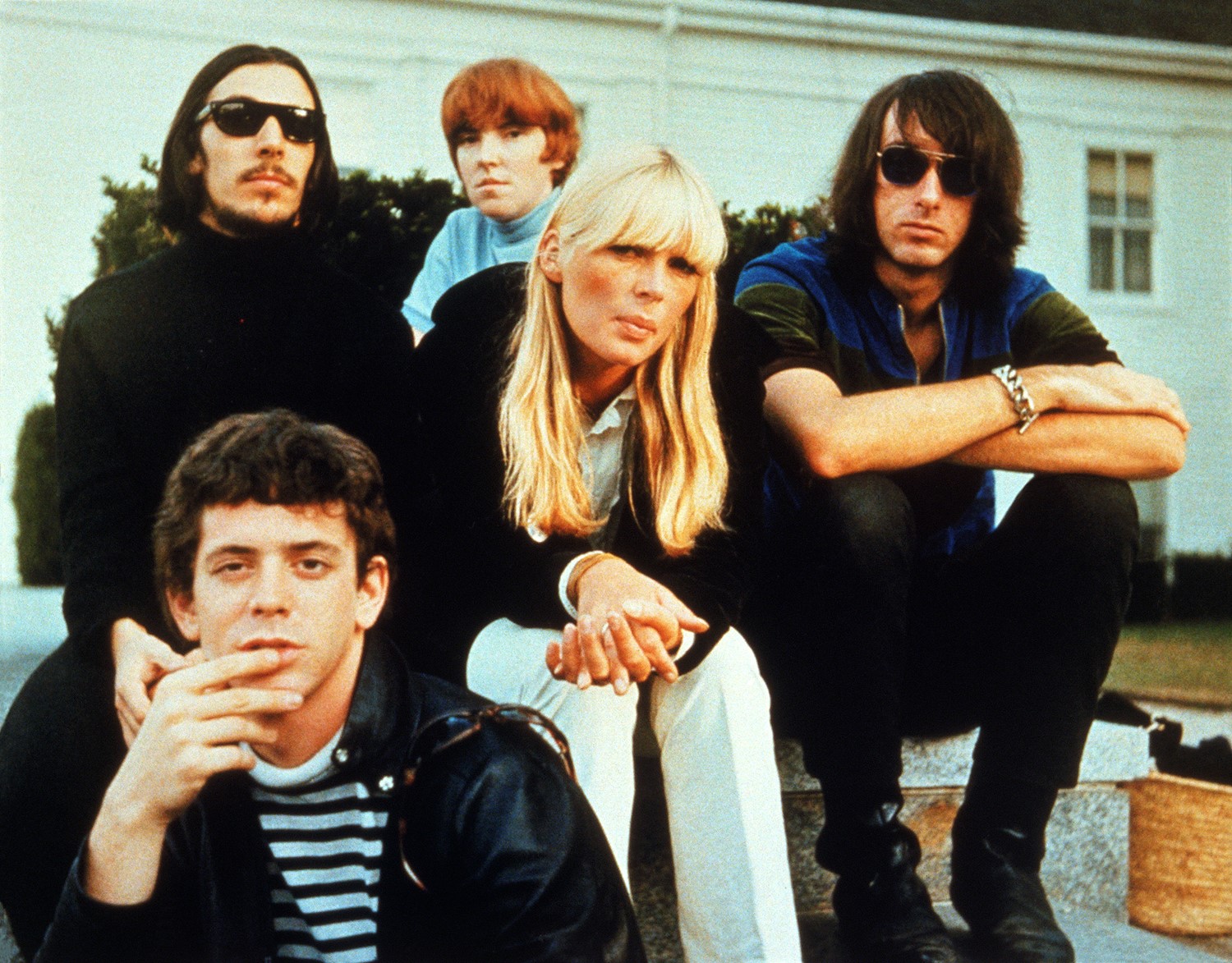 Released in 1967, just as “psychedelic rock” was taking off, 3 months before the “Summer of Love,” no one was ready this strange, gritty slice of New York street life that was a far cry from the flower power energy that was beginning to emanate from San Francisco on America’s other coast.
Released in 1967, just as “psychedelic rock” was taking off, 3 months before the “Summer of Love,” no one was ready this strange, gritty slice of New York street life that was a far cry from the flower power energy that was beginning to emanate from San Francisco on America’s other coast.
Indeed, record buyers might have thought pop artist extraordinaire, Andy Warhol, had decided to embark on a recording career as his was the only name to appear on the front cover. In truth, while he was listed as the album’s producer, Warhol’s contributions were limited to putting up the money for the album’s recording sessions and providing the artwork for the disc’s front cover.

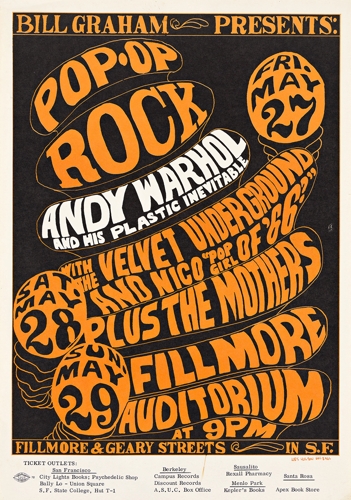
And what a front cover it was! It featured a silk-screen-style illustration of a banana peel that could be peeled back, revealing another silk-screen-style print of a banana.
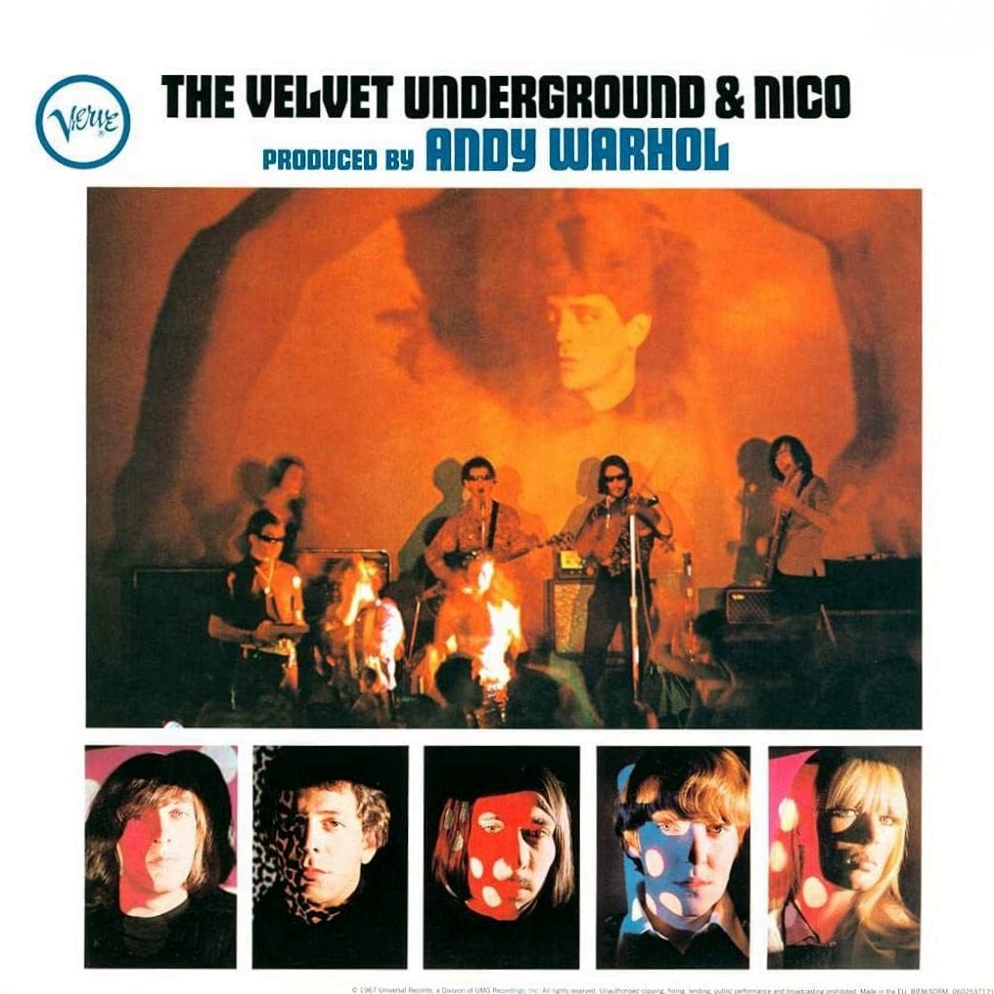 Flipping that cover over revealed that the actual artists were the Velvet Underground, accompanied on several of the LP’s tracks by the German singer Nico. Warhol had discovered the band and was serving as their manager in those days. He had assembled a traveling show that combined the music of the Velvets with an experimental light show that he named “The Exploding Plastic Inevitable.” Warhol had also inserted Nico into that traveling show, and she had accompanied the band on occasional tunes.
Flipping that cover over revealed that the actual artists were the Velvet Underground, accompanied on several of the LP’s tracks by the German singer Nico. Warhol had discovered the band and was serving as their manager in those days. He had assembled a traveling show that combined the music of the Velvets with an experimental light show that he named “The Exploding Plastic Inevitable.” Warhol had also inserted Nico into that traveling show, and she had accompanied the band on occasional tunes.
The group recorded most of the album before they had a record deal. They tried shopping it to Columbia Records. They passed, as did Atlantic and Elektra Records. The only taker was M-G-M’s Verve label. M-G-M was notoriously bad at promoting rock music. When that ineptitude was combined with the out-there lyrical content of the album, the result was a commercial disaster. “Underground radio” (the migration of rock from AM Top 40 stations to album-oriented FM stations) was just getting started, and most markets didn’t have any FM stations playing rock at that time.
So, the album sank like a stone (only reaching #185 on Billboard’s album charts). However, the album still found its way into the hands of many kids just getting their start in the music business, people like David Bowie, Iggy Pop, and Mott the Hoople, and it had a profound effect on them.
Since its release, the Velvet Underground & Nico has been credited with touching off the indie band movement, the punk movement, the art rock movement, and serving as major inspiration for bands like the Ramones, the Sex Pistols, Roxy Music, and others.
The Velvet Underground would soon break away from Warhol and record three more albums before Reed took off for a very successful solo career. Since its initial release, their debut album has consistently been cited as one of the greatest rock albums ever released and, despite bombing in 1967, has gone on to sell over a million copies.
If you’ve never heard this album, do yourself a favor. Track down The Velvet Underground & Nico and rediscover the exact moment when rock & roll grew up.
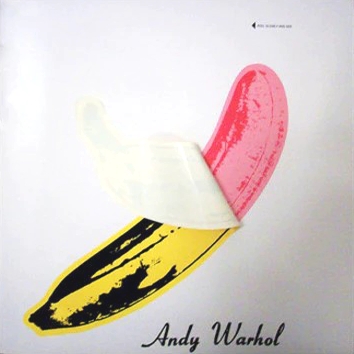
The Not-So-Sweet Truth About Sugar & Aging
 Sad news for those of us with a sweet tooth – sugar actually accelerates the aging process. There is one glimmer of hope in this news. The natural sugar found in fresh fruit does not contribute to aging. The sugar that’s bad for you is the added sugars found in many of the things we eat. Generally, it’s anything in the ingredients list that ends in “ose” – like “sucrose” and “fructose.”
Sad news for those of us with a sweet tooth – sugar actually accelerates the aging process. There is one glimmer of hope in this news. The natural sugar found in fresh fruit does not contribute to aging. The sugar that’s bad for you is the added sugars found in many of the things we eat. Generally, it’s anything in the ingredients list that ends in “ose” – like “sucrose” and “fructose.”
Studies have found that diets rich in these added sugars not only can lead to diabetes, but they also speed up the body’s aging process. Those with a diet low in added sugars may actually find themselves biologically younger than their actual age, while those with a high sugar intake can speed up the aging process as much as seven times its natural rate!
Where can you find some of these “added sugars?” Glad you asked:
- Condiments – Such as Ketchup or salad dressing
- Nut Butters – Peanut butter and others (sorry, Nutella fans)
- Flavored Yogurt – Especially low-fat yogurt
- Prepared Grains – Such as granola, instant oatmeal, and breakfast cereals
- Sauces – Like barbecue sauce and pasta sauces
Phony Freebies
 Beware if you’re offered a “free gift” or “free trial” to sign up for some service that will require regular payments moving forward. Even if they stress how easy it is to cancel. Many times, the “free” item will come with shipping costs or there will be something hidden in those lengthy “terms & conditions” you have to click to agree to when signing-up that allow them to penalize you or back-charge you for the free gift,” should you cancel before the promotional period ends.
Beware if you’re offered a “free gift” or “free trial” to sign up for some service that will require regular payments moving forward. Even if they stress how easy it is to cancel. Many times, the “free” item will come with shipping costs or there will be something hidden in those lengthy “terms & conditions” you have to click to agree to when signing-up that allow them to penalize you or back-charge you for the free gift,” should you cancel before the promotional period ends.
Similarly, many of those "zero-interest” deals actually start calculating interest from the day you make the purchase. Should you fail to completely pay off the debt before the end of the promotional period, you will pay interest on the entire purchase amount from the day you made the purchase, no matter how much of the original amount you’ve paid off.
There’s a reason why the cliché, “There is no such thing as free lunch,” was created.
3 Tips for Living Longer

- Get Enough (But Not Too Much) Vitamin D – Often called “the sunshine vitamin because we can receive it by being out in sunlight, vitamin D is linked to longevity. But too much can increase your risk of dying. Consult your physician to make sure you’re getting the right amount.
- Cut Back on Pain Pills – Studies show that taking daily doses of painkillers such as ibuprofen and naproxen (marketed under brand names like Advil, Motrin, and Aleve) may rise your risk of heart attack and stroke. Reserve these drugs for when pain is the most severe, and then use the lowest possible dosage.
- Get Plenty of Sleep – Make sure you're getting at least six hours of sleep. Anything less can double your risk of heart attack and stroke.
Bedrock Confidential
Just in case you were wondering, whatever happened to Pebbles when she grew up…

Unfortunately, a promising film career was curtailed because the motion picture camera hadn’t been invented yet.
It's Not Too Late to Get Your Vote In!

Brain Builders
 Want to stay brain sharp as you age? Beware of those games that claim to boost brain activity. Play them if you find them fun, but know there is no scientific research that shows that actually do anything boost brain activity.
Want to stay brain sharp as you age? Beware of those games that claim to boost brain activity. Play them if you find them fun, but know there is no scientific research that shows that actually do anything boost brain activity.
But here are some things the experts say will actually help you preserve your brain health:
- A Healthy Diet: No specific diet has been found to improve cognitive abilities. However, studies have shown that diets with less meat and more nuts, beans, whole grains, veggies, and olive oil can improve brain health.
- A Good Night’s Sleep: Studies have shown that poor sleep quality and even sleep apnea can lead to cognitive impairment and Alzheimer’s.
- A Healthy Heart: The medical profession says that a healthy heart contributes to a healthy mind. This is especially true with blood pressure, so do what you can to keep that low.
- Exercise: Getting at least 30 minutes of aerobic exercise daily can be good for your mind as well as your body. And studies show it’s never too late to start.
- Staying Socially and Intellectually Active: Staying socially active doesn’t necessarily mean participating in group activities every night of the week. It can be as simple as talking to friends on a regular basis. While games may not have any proven effect on maintaining brain health, activities such as reading books, writing letters, or learning a new language can help you stay sharp as you age!
Pop Up Player
Latest Posts–Financial Info
-
Quick Ways to Score Extra Cash
Even in today’s economy, everybody is looking for ways to expand their income. We have three ways that might do the trick. Cash in Your Gift Cards – Have unused gift cards? You can sell…
-
Fast & Free Will
Did you know a will dosn't have to be a long, complicated process? And you defintely should have one! Dying without one can leave your estate in chaos. The internet comes to rescure again. You…
-
Making Home Renovations Pay
Fixing up your home? You might want to tell your insurance company about it. 8 of the 10 largest home insurers offer little-publicized discounts for certain renovations or upgrades. Go to BankRate.com and type in…
-
Why Use Credit Cards, Not Debit Cards
Because credit cards give you more protection should your card number be stolen. Most credit card companies have a limit on how much your account may be charged in the event of false charges. In…
-
Before You Rent a Self-Storage Unit
The rapid growth of self-storage facilities across the United States is a testimony to Americans having more stuff than they know what to do with. Before you rent a unit for your excess stuff,read this:…
-
Older Workers Wanted!
Ever been worried you might lose your job because you were getting too old? Relax. Many employers are now looking specifically at hiring and retaining workers over the age of 60. Why? Because of their…


